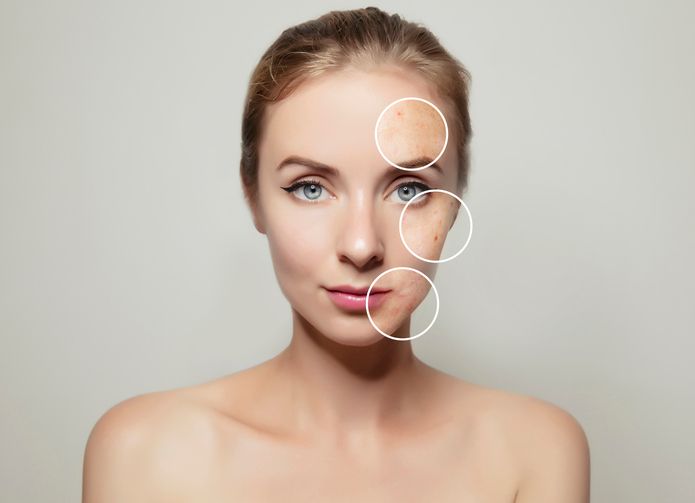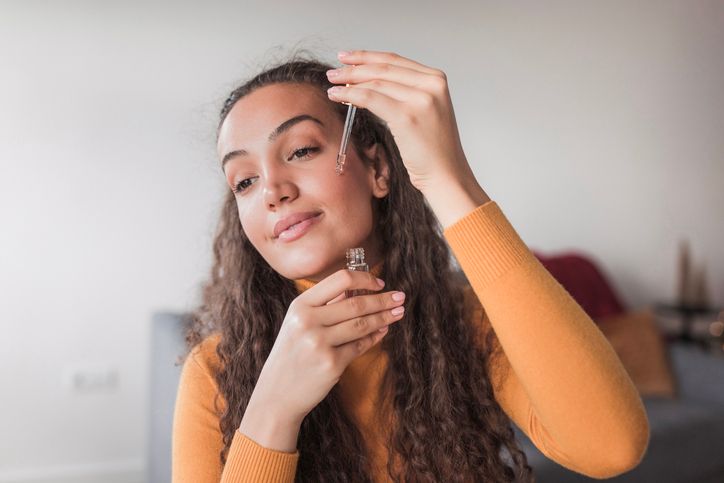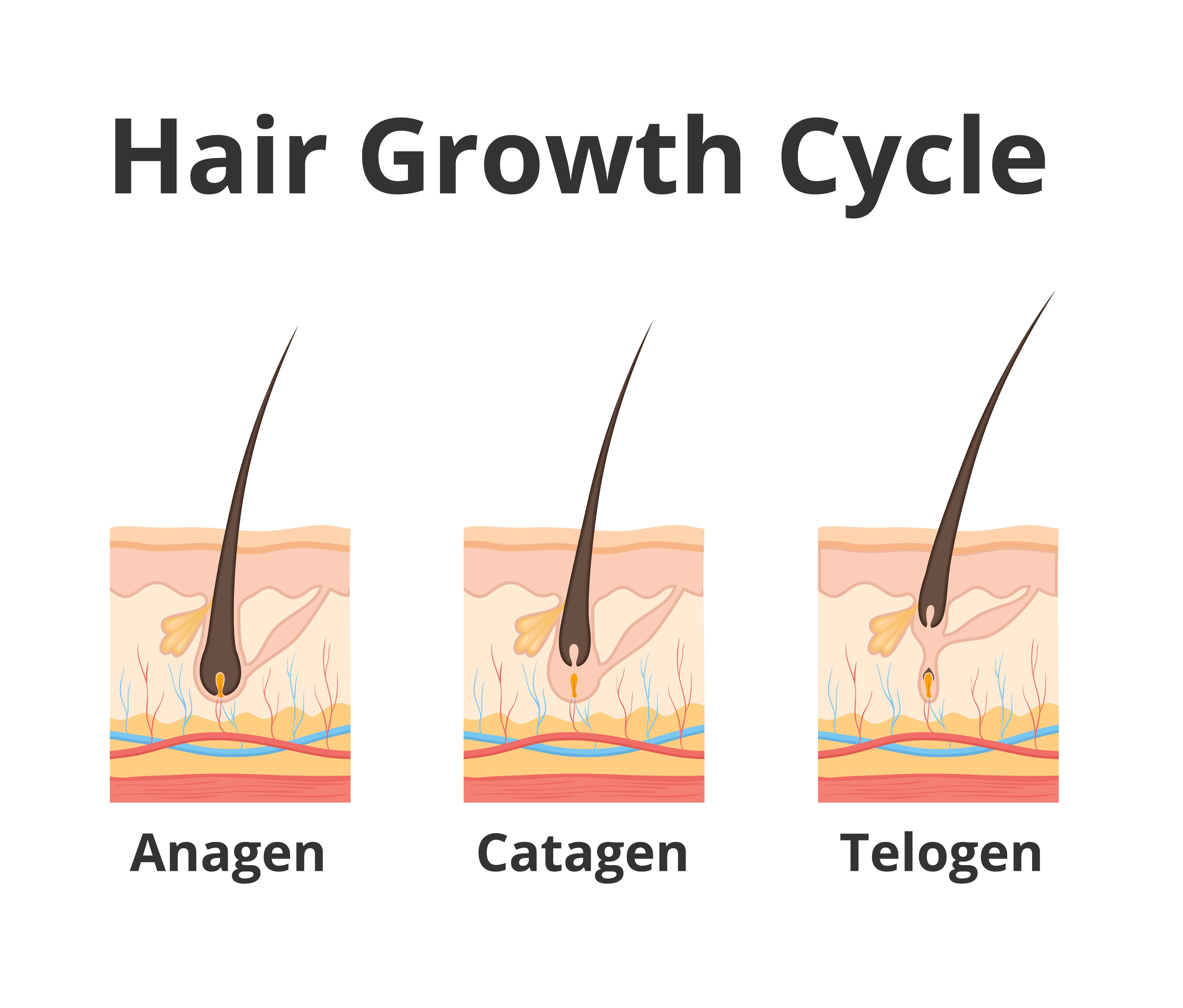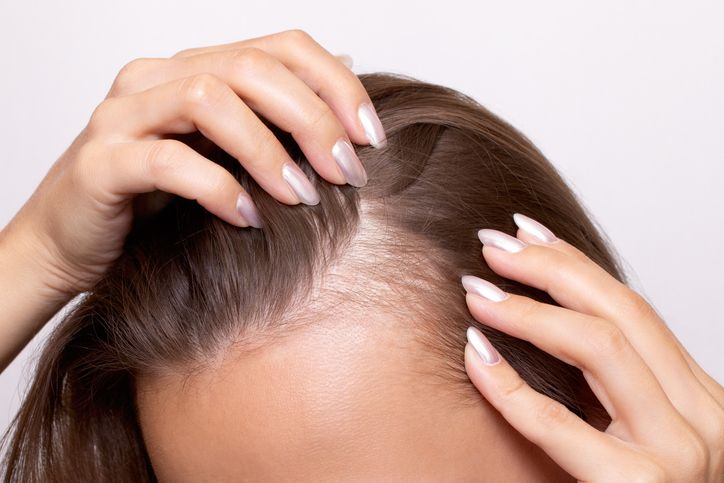- Home
- Trend
- Weight Loss Strategies
- Acne Tips
- Hair Health Information
- Blemish Removal Tips
- Acne Scar Removal Tips
- Muscle Building Techniques
- Intimate Care Tips
- Postpartum Intimate Care
- Eye Bags Wiki
- Tips for Face Slimming
- Secret of Permanent Hair Removal
- Breast Enlargement Tips
- Cure to Snoring
- Marionette Lines
- Skin-Tightening Secrets
The frustration of acne can linger long after the breakouts have subsided, often in the form of unwanted scars. If you've ever gazed in the mirror and questioned whether these marks are permanent, you're certainly not alone.
How Many Types of Acne Scars are There?

Acne, a prevalent skin condition affecting millions worldwide, can leave behind more than just fading memories. While our skin possesses a remarkable ability to heal itself from breakouts, in some cases, it can respond with the formation of scar tissue. These unwelcome marks, often referred to as acne scars, can vary significantly in appearance and presentation.
Understanding the different types of acne scars and find out which one is yours are the crucial steps toward embarking on a personalised treatment journey and achieving a smoother, more even complexion:
1. Atrophic Acne Scars
Atrophic scars, also called depressed acne scars, are the most common type of acne scar, characterised by a loss of underlying tissue, leading to depressions in the skin's surface. These scars can be further categorised based on their appearance:
• Rolling Acne Scars: Imagine rolling hills gently traversing your facial landscape. These rolling depressions are, fortunately, the most prevalent type of acne scar. Their rolling nature makes them less noticeable when light reflects off the skin's surface. These appear as gentle, rolling depressions that resemble rolling hills on the skin's surface. They typically have a wider base and shallower depth compared to other depressed scars.
• Boxcar Acne Scars: In contrast to rolling scars, boxcar scars present as distinct, well-defined depressions with sharp vertical edges. Think of them as box-shaped imprints left by more severe acne breakouts. While they might make you yearn for a penthouse-level smoothness, effective treatment options exist to address these boxcar concerns. In contrast, boxcar scars present as distinct, well-defined depressions with sharp vertical edges. Imagine box-shaped imprints left by acne breakouts. They tend to have a flatter base and can vary in size.
• Ice Pick Acne Scars: These narrow, deep scars resemble tiny puncture wounds inflicted by an ice pick, hence their name. Unlike rolling scars, ice pick scars typically have a pointed base and steeper sides. While they may not be the souvenir you envisioned, various treatments can effectively minimise their appearance. The narrow and deep nature of these scars gives them their name. They resemble tiny puncture wounds inflicted by an ice pick, often with a pointed base and steeper sides.
2. Hypertrophic Acne Scars
This type of raised acne scars form when the body produces an excessive amount of collagen during the healing process. However, unlike keloid scars, hypertrophic scars typically remain confined to the original boundaries of the pimple, often appearing as a reddish, elevated bump.
Hypertrophic raised scars appear as reddish, elevated bumps that typically remain confined to the original boundaries of the pimple. They may be slightly itchy or tender.
3. Keloid Acne Scars
Similar to hypertrophic scars, keloid scars are raised; however, they extend beyond the original boundaries of the pimple, often growing larger over time. These scars can be more challenging to treat and people with darker skin tones are more prone to developing keloid scars.
Similar to hypertrophic scars, keloid scars are raised; however, they extend beyond the original boundaries of the pimple, often growing larger over time. These can sometimes be itchy or painful.
Will My Skin Heals Eventually If I Don't Treat My Mild Acne Scars?
In most cases, not treating acne scars won't lead to any physical health risks. However, there can be some aesthetic and emotional consequences to consider:
1. Persistence
Acne scars are typically permanent because they result from damage to the skin's deeper layers, such as collagen loss or excessive tissue formation. Without intervention, scars may lighten slightly over time due to natural skin turnover, but the structural changes often remain.
2. Appearance and Emotional Impact
The visibility of acne scars varies based on their type and severity. Raised scars (hypertrophic or keloid) can protrude from the skin, while depressed scars (like icepick or boxcar scars) create indentations. These differences can affect how noticeable scars are and may impact your skin's smoothness and overall complexion.
Acne scars can take a toll on emotional well-being, affecting self-esteem and confidence. Visible scars may lead to feelings of self-consciousness, particularly in social or professional situations. Addressing scars can alleviate these emotional burdens and improve how you perceive yourself.
3. Slow Fading or Potentially worsen
In many cases, untreated acne scars remain stable or fade very slowly. Factors like skin type, scar depth, and individual healing processes influence how scars evolve over time. Without targeted treatments, scars may persist and potentially worsen, particularly if they are hypertrophic or keloid in nature.
4. Causes Uneven Skin Texture
Acne scars often alter skin texture, resulting in an uneven surface that can be challenging to manage with cosmetics. Textural irregularities, such as pits, bumps, or rough patches, can affect how smoothly makeup applies and how the skin reflects light. Addressing texture concerns through treatment can restore a smoother skin appearance.
免費體驗
PicoCure Pigmentation Removal Treatment
1 Minute Self-Registration
Date should not be before minimal date
Are Acne Scars Permanent? When You Need to Consider in Treating Acne Scars
Acne scars, while a common sequelae (medical term for consequence) of acne, exhibit a wide range of presentations and can be frustratingly persistent in some individuals. Understanding the factors that influence scar formation and persistence is crucial for creating a successful treatment plan. Here are the reasons why some scars fade naturally over time, while others seem to linger stubbornly:
• Severity of Acne: The depth and inflammatory nature of acne lesions play a significant role in scar development. Deep, cystic pimples that cause significant inflammation are more likely to leave noticeable scars compared to milder, superficial breakouts.
• Pigmentation: People with darker skin tones are more prone to developing post-inflammatory hyperpigmentation (PIH) – dark spots that linger after a pimple has healed. While not technically a scar, PIH can be a significant cosmetic concern. Fortunately, effective treatment options exist to address PIH.
• Individual Variability in Wound Healing: Our skin's ability to heal varies greatly from person to person. Some individuals possess a remarkable ability to heal with minimal scarring, while others are more prone to developing thicker, more noticeable scar tissue. This inherent variability is often referred to as "scarring propensity," and it plays a significant role in the formation and persistence of acne scars.
Erasing the Past (to a Degree): Types of Treatment for Acne Scars
While complete scar removal may not always be achievable, there are several effective treatment options available to significantly improve the appearance of acne scars. These approaches target various aspects of scar formation, leading to a smoother, more even complexion. Let's explore some of the most common methods:
1. Chemical Peels
Chemical peels work by applying a controlled acidic solution to the skin's surface. This solution causes the top layer of skin cells to exfoliate and shed, revealing the smoother underlying skin.
• Best for: Superficial acne scars, particularly rolling scars and mild boxcar scars. Chemical peels can also improve overall skin texture and tone.
• Limitations: Chemical peels are not suitable for treating deep ice pick scars or keloid scars. Additionally, multiple treatment sessions may be necessary for optimal results.
2. Laser Resurfacing
Laser resurfacing utilises a focused laser beam to precisely target scar tissue. The laser energy stimulates collagen production, promoting skin renewal and a smoother texture. Different types of lasers offer varying levels of penetration and treatment capabilities.
• Fractional Lasers
These lasers deliver microscopic columns of laser energy into the skin, creating controlled zones of injury. The surrounding healthy tissue then aids in healing, promoting collagen production and scar improvement. Fractional lasers are generally well-tolerated and offer faster healing times compared to traditional ablative lasers. They are effective for treating various types of scars, including rolling scars, boxcar scars and ice pick scars (depending on depth)
• Ablative Lasers
These lasers remove a more significant portion of the outer layers of skin, offering deeper resurfacing for more severe scars. Ablative lasers require longer healing times but can be very effective for deeper acne scars like boxcar scars and ice pick scars
3. Dermal Fillers
Dermal fillers are injectable substances used to restore volume and lift depressed areas of the skin. They can be particularly effective for treating rolling and boxcar scars.
• Best for: Mild to moderate rolling scars and boxcar scars. Fillers can effectively add volume and create a more even skin surface.
• Limitations: Dermal fillers are not a permanent solution, and repeated injections are typically needed to maintain results. Additionally, they may not be suitable for all scar types, particularly deep ice pick scars.
4. PicoCure Pigmentation Removal Treatment
Aside from directly targeting scar itself, a recent advancement in laser technology, picosecond lasers offer a promising approach to post scar treatment. These lasers deliver ultra-short pulses of energy that fragment scar tissue without significant thermal damage to surrounding tissue.
• Best for: Picosecond lasers can address post-inflammatory hyperpigmentation (PIH) associated with acne scars.
• Advantages: Picosecond lasers offer several potential benefits, including:
Precise targeting of tissue with minimal damage to surrounding skin.
Reduced risk of post-inflammatory hyperpigmentation, particularly beneficial for individuals with darker skin tones.
Faster healing times compared to traditional ablative lasers.
Potential for improved results, particularly for treating stubborn or deeper scars.
It's important to note that the most suitable treatment option will depend on the specific type, severity, and location of your concern. Talk to us if you wish to know your skin issue better and obtain a better skin complexion in the long run.
<consultation registration link>Scar Prevention Strategies: 3 Proactive Measures to Keep Your Skin Tissue Healthy
While effective treatments exist for acne scars, the most desirable outcome is preventing them altogether. Here, we explore practical strategies to minimise the risk of scar formation and maintain a smooth, clear complexion:
Prompt and Professional Acne Management
Early intervention is crucial. Don't wait for acne to worsen before seeking professional help. A board-certified dermatologist can assess your individual needs and develop a personalised treatment plan to effectively manage active breakouts. This not only helps control inflammation, a key factor in scar formation, but also reduces the likelihood of developing deeper, more noticeable scars.
Resist the Urge to Pick or Pop
It can be tempting to pick at pimples, but this is a guaranteed path towards potential scarring. Picking or popping can introduce bacteria deeper into the skin, worsening inflammation and increasing the risk of infection. Furthermore, the trauma caused by picking can damage the underlying dermis, leading to scar formation. If a blemish is particularly bothersome, schedule an extraction appointment with a dermatologist who can safely remove it using proper techniques.
Embrace a Gentle Skincare Routine
Maintaining a consistent skincare routine focused on cleansing and gentle exfoliation is vital for promoting healthy cell turnover and minimising inflammation. This creates a more resilient environment for your skin, better equipped to heal from breakouts with minimal scarring. Here's a breakdown of essential steps:
• Cleansing: Wash your face twice daily with a gentle, fragrance-free cleanser suitable for your skin type. This removes excess oil, dirt, and bacteria that can contribute to breakouts.
• Exfoliation: Exfoliate 1-2 times per week with a gentle exfoliating product to remove dead skin cells and promote cell turnover. This helps keep pores clear and prevents clogged pores that can lead to breakouts.
免費體驗
PicoCure Pigmentation Removal Treatment
1 Minute Self-Registration
Date should not be before minimal date
Get Your Acne Scar Treatment and Routine Planning Ready Today!

Let's face it, acne scars can be unwelcome reminders of past breakouts. But here's the good news: they don't have to be a permanent fixture on your skin. Effective treatments exist to minimise their appearance and reveal a smoother, more even complexion.
A chat with Perfect Medical's skin care professional can help you explore the best treatment options based on your individual needs and skin type. With the right approach, you can transform your once-scarred landscape into a smoother, more confident look!
免費體驗
PicoCure Pigmentation Removal Treatment
1 Minute Self-Registration
Date should not be before minimal date
FAQ

1. Are acne scars permanent?
While acne scars themselves are technically permanent, their appearance can often be significantly improved. Various treatment options, such as skin resurfacing techniques (chemical peels or lasers), can address the texture and depth of scars, making them less noticeable. However, complete removal is not always achievable.
2. Can I get rid of severe scarring at home?
Unfortunately, severe scarring typically requires professional intervention for noticeable improvement. While a good skincare routine can promote overall skin health and potentially aid in the healing process, it's unlikely to significantly address deep scars.
3. Will treating active acne prevent scarring?
Early and effective treatment of active acne can significantly reduce the risk of developing severe scarring. When pimples become inflamed for extended periods, it disrupts the skin's natural healing process, potentially leading to the formation of excess collagen and raised scar tissue. By controlling active breakouts, you minimise inflammation and create a better environment for your skin to heal with minimal scarring.
4. Will picking at my pimples make my acne worse and leave scars?
Yes, picking at pimples is a recipe for increased inflammation, infection, and potential scarring. The trauma caused by picking can damage the deeper layers of your skin, leading to raised scar tissue formation. Additionally, picking can introduce bacteria deeper into the pore, worsening the existing breakout. Resist the urge and let your pimples heal naturally, or consult a dermatologist for safe extraction if necessary.
5. How long does it take for acne scars to fade?
The fading process for acne marks can vary depending on the severity, type of scar, and your individual skin's healing process. Some superficial scars may improve within a few months, while deeper scars might take longer to show significant improvement with treatment.









